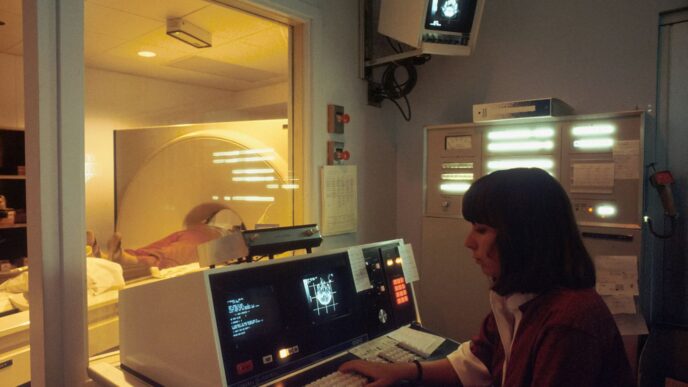Alright, let’s talk about MedTech M&A in 2025. It’s a pretty dynamic space right now, with a lot of moving parts. Companies are looking to grow, innovate, and basically stay ahead of the curve. Whether you’re looking to buy or sell, or just trying to understand what’s going on, keeping up with these trends is key. It’s not just about having a good product anymore; it’s about strategy, timing, and knowing where the market is headed. We’re seeing bigger deals, a focus on specific technologies, and economic factors playing a bigger role than ever. So, let’s break down what’s really happening in the world of medtech m&a.
Key Takeaways
- The medtech m&a scene is seeing fewer but much larger deals, with companies focusing on strategic buys that really fit their existing business.
- Technology, especially AI and digital health tools, is a huge driver for acquisitions, as companies want to add cutting-edge solutions to their product lines.
- Economic conditions and potential regulatory shifts are influencing investor activity, with some adopting a cautious approach early on but overall optimism for growth.
- Companies are looking to acquire businesses that strengthen their supply chains and manufacturing capabilities, making them more resilient.
- New drug classes, like GLP-1s, are making companies rethink their portfolios, potentially driving acquisitions to adapt to changing patient needs and device usage.
Navigating the Shifting MedTech M&A Landscape
The MedTech M&A scene is really buzzing right now, and it feels like things are changing pretty fast. We’re seeing fewer deals overall, but the ones that are happening are much bigger. It’s not just about getting bigger for the sake of it, though. Companies are being more selective, looking for specific technologies or ways to round out their product lines. It’s a bit like putting together a puzzle, but with multi-billion dollar pieces.
Strategic Acquisitions Drive Market Consolidation
Big companies are definitely buying up smaller ones, and this is really changing the shape of the market. Think about it: when a giant like Johnson & Johnson buys a company with a groundbreaking heart device, it instantly changes the game for everyone else in that space. This isn’t just about grabbing market share; it’s about acquiring innovation and sometimes, just to keep up with competitors. We’re seeing a trend where companies are buying to fill gaps in their own product offerings, making them more complete and competitive. It’s a way to consolidate the market, making it harder for smaller, independent players to compete without a strong niche.
Focus on Larger Transactions and Portfolio Optimization
So, what does this mean for deal sizes? Well, they’re getting bigger. We’re talking hundreds of millions, even billions, of dollars. Companies aren’t just buying a single product anymore; they’re often acquiring entire portfolios or technologies that can be applied across multiple product lines. This is all part of a bigger strategy to optimize what they already have. Instead of spreading themselves too thin, they’re focusing their resources on areas that show the most promise or where they can make the biggest impact. It’s about making smarter, more impactful investments rather than just a lot of small ones.
Impact of Economic Uncertainty on Investor Activity
Now, let’s talk about the money side of things. Even with all this activity, there’s still a bit of economic uncertainty floating around. Some investors are taking a
Key Drivers of MedTech M&A in 2025
So, what’s really pushing all these deals in the MedTech world right now? It’s not just one thing, but a mix of exciting new tech, changing patient needs, and, let’s be honest, the economy. Companies are looking to get ahead, and buying up others is a fast way to do it.
Technological Advancements Fueling Innovation
This is a big one. Think about how fast things are changing with AI, robotics, and even just making devices smaller and more connected. Companies that have cool, new tech are prime targets. It’s like finding a shortcut to the future. For example, some companies are snapping up others specifically for their AI tools that can help doctors diagnose problems faster or figure out the best way to treat someone. It’s not just about having a product anymore; it’s about having the smartest product.
Addressing Demographic Shifts and Chronic Diseases
We’re all getting older, and more people are dealing with long-term health issues like heart problems or diabetes. This means there’s a growing need for devices that can help manage these conditions. Acquisitions are happening in areas that focus on things like chronic pain management or devices for an aging population. Plus, more procedures are moving out of big hospitals into outpatient centers, so companies are buying up tech that works well in those settings, like minimally invasive tools.
Expanding into High-Growth Therapeutic Areas
Some parts of the medical field are just growing faster than others. Areas like heart devices, surgery robots, and treatments for the nervous system are hot right now. Companies are buying up smaller players in these fields to get a bigger piece of the action. It’s a way to diversify and make sure they’re not missing out on where the real growth is happening. It’s a bit like picking the winning horses before the race even starts.
The Role of Artificial Intelligence in MedTech M&A
Artificial intelligence (AI) isn’t just a buzzword anymore; it’s actively reshaping how medical technology companies are bought and sold. We’re seeing a real shift where companies with strong AI capabilities are becoming prime acquisition targets. It’s not just about having a cool gadget; it’s about how that gadget can use AI to make healthcare better, faster, or more personalized.
AI-Driven Diagnostics and Personalized Treatment
Think about diagnostics. AI is getting really good at spotting things in scans or data that humans might miss. Companies that have developed AI tools for earlier disease detection or more accurate diagnoses are super attractive. It’s not just about finding problems, though. AI is also key to tailoring treatments to individual patients. This means acquiring companies that can use AI to figure out the best drug, dosage, or therapy for a specific person based on their unique biological makeup and health history. This move towards hyper-personalized medicine is a huge driver for M&A activity.
AI-MedTech Collaborations and Digital Health Platforms
Beyond just buying companies with AI tech, there’s a lot of interest in partnerships and acquiring digital health platforms that integrate AI. These platforms can manage patient data, facilitate remote monitoring, and connect different parts of the healthcare system. Companies are looking to buy or partner with those who have built robust digital ecosystems powered by AI. It’s about building a connected healthcare future, and AI is the glue holding it all together. We’re seeing a lot of activity around companies that can manage and analyze large datasets effectively, which is where AI really shines.
Enhanced Scrutiny for AI-Related Transactions
Now, it’s not all smooth sailing. Because AI is so new and powerful, regulators are paying closer attention. Deals involving significant AI components, especially those that could impact data privacy or create monopolies in AI-driven healthcare, are facing more intense review. Antitrust bodies are looking closely at whether these acquisitions could stifle innovation or lead to unfair advantages. So, while AI is a massive opportunity for MedTech M&A, companies need to be prepared for a more thorough examination of these deals.
Strategic Portfolio Management and Diversification
So, companies are really looking at what they have and what they need, right? It’s like cleaning out your closet, but for medical devices. They’re selling off bits that aren’t really working anymore and putting more money into areas that are booming, like robotics or treatments for diabetes and heart issues. It’s all about making the whole collection stronger.
Filling Portfolio Gaps Through Acquisitions
This is a big one. Instead of trying to build everything from scratch, which takes ages and costs a fortune, companies are just buying what they need. Think about it: if you’re strong in one area but weak in another, and there’s a cool company out there that’s already doing great work in that weaker area, why not just buy them? It’s faster and often makes more sense. Johnson & Johnson did this when they bought Shockwave Medical to beef up their heart stuff. It’s a smart way to get new products and technologies without the long development road.
Responding to Life Cycle Compression
Products just don’t last as long as they used to. Technology moves so fast, and what’s cutting-edge today can be old news tomorrow. Because of this, companies have to keep refreshing their product lines. M&A is a quick way to do that. If a company’s main products are getting old, they might buy a newer, more innovative company to replace them or add to their offerings. It’s like trading in your old phone for the latest model, but on a much bigger scale.
Consumer-Driven Healthcare Opportunities
People are more involved in their own health these days, and they’re looking for solutions they can use themselves, sometimes even directly. This means companies are looking to acquire businesses that can tap into that trend. Maybe it’s a company making a cool new wearable health tracker or something that makes it easier for people to manage their conditions at home. It’s about meeting people where they are and offering them tools that fit into their daily lives, which is a whole different ballgame than just selling to hospitals.
Economic and Regulatory Influences on Dealmaking

So, what’s really moving the needle on MedTech deals in 2025? It’s a mix of money matters and the rulebook. Think of it like planning a big trip – you need to know how much cash you have and what the travel restrictions are. For MedTech companies looking to buy or sell, understanding these economic and regulatory currents is super important.
Favorable M&A Environment and Lower Financing Costs
Good news on the money front! It looks like 2025 is shaping up to be a pretty good year for MedTech mergers and acquisitions. Financing costs are expected to be lower, which makes borrowing money to buy another company less of a headache. This could really get things moving, especially for those bigger strategic plays. We’re seeing analysts predict a bit of a boom, with some of the big names in MedTech likely to stay active buyers. It’s not just about having the cash, though; it’s about being able to get it at a decent rate.
Antitrust Scrutiny and Evolving Regulatory Norms
Now, for the other side of the coin: the rules. While some expect a slightly more relaxed regulatory approach overall, antitrust concerns are still a big deal. Regulators are keeping a close eye on big mergers to make sure they don’t stifle competition. This means that even if a deal makes perfect business sense, it might face hurdles if it looks like it could create a monopoly. Companies need to be prepared for this scrutiny. It’s not just about following the letter of the law, but also about showing how a deal will ultimately benefit patients and the healthcare system. This careful watch means that deals need to be well-thought-out and clearly justified.
Private Equity’s Growing Involvement in MedTech
Here’s a trend that’s hard to ignore: private equity (PE) firms are getting more and more involved in MedTech. They’ve got a lot of money ready to invest, and they’re looking for good opportunities. We’re seeing them step in for some pretty significant deals, sometimes buying entire business units from larger companies. This isn’t just about them making a quick profit; PE firms often bring operational know-how and can help streamline businesses. Their involvement can speed up deals and bring a different kind of focus to the companies they invest in. It’s a dynamic that’s definitely changing the M&A landscape, offering another avenue for companies looking to sell or for buyers seeking capital.
Supply Chain Resilience and Manufacturing Capabilities
Okay, so let’s talk about something that’s become super important lately: making sure our medical devices can actually get made and delivered without a hitch. After all those supply chain headaches we saw a few years back, companies are really zeroing in on this. It’s not just about having a cool new gadget anymore; it’s about being able to produce it reliably.
Nearshoring and Supply Chain Stability
Remember when getting parts from overseas felt like a gamble? Yeah, a lot of companies do too. That’s why there’s a big push to bring manufacturing closer to home, or at least to places that are more stable. Think about it – less shipping time, fewer customs headaches, and a better handle on quality control. It’s about building a supply chain that can actually withstand disruptions, whatever they might be. We’re seeing acquisitions happen where one company buys another specifically to get their hands on a manufacturing facility in a more secure location, or to gain expertise in managing those complex, global logistics.
Advanced Manufacturing Technologies
Beyond just where things are made, how they’re made is also a hot topic. Companies are looking to acquire businesses that are using cutting-edge manufacturing techniques. This could mean anything from super-precise 3D printing for custom implants to automated assembly lines that crank out devices faster and with fewer errors. It’s all about efficiency and innovation. If a company has a knack for advanced manufacturing, it makes them a much more attractive target because they can help the acquiring company scale up production and potentially lower costs.
Acquiring Firms for Enhanced Operational Efficiency
So, putting it all together, a lot of M&A activity in this space is driven by a desire to just make things run smoother. Companies are buying other firms not just for their products, but for their operational know-how. This could be anything from a company that’s really good at managing inventory to one that has mastered a specific, hard-to-replicate manufacturing process. The goal is pretty straightforward: to build a more robust, efficient, and reliable operation that can keep up with demand and meet strict quality standards. It’s a practical, no-nonsense approach to strengthening the business for the long haul.
Adapting to Emerging Market Trends

The MedTech industry isn’t just about inventing new devices—it’s about keeping up with what’s really going on out there. 2025 has thrown some curveballs, with changing therapies, high-growth segments, and shifting valuations shaking up what companies want from M&A deals. Let’s break down what’s making the biggest waves right now.
GLP-1 Drug Impact on Device Usage
GLP-1 drugs—think Ozempic and Wegovy—are getting a lot of attention, especially for how they’re changing approaches in obesity and diabetes management. This has started to influence which devices see more (or less) demand:
- Insulin delivery devices and glucose monitors may see slower growth as effective weight-loss drugs take hold.
- Companies that once focused only on diabetes hardware are reevaluating their portfolios—some are shifting to metabolic or cardiovascular spaces.
- M&A targets now include firms with digital tools for weight and metabolic health, not just traditional equipment.
A quick comparison of device adoption rates (2023–2025 estimates):
| Device Type | 2023 Growth | 2025 Projected Growth |
|---|---|---|
| Insulin Pumps | +7% | +3% |
| Continuous Monitors | +12% | +6% |
| Digital Weight Tools | +4% | +10% |
Positioning Portfolios for Future Growth
There’s no room for standing still. MedTech firms are:
- Selling off slow-growth product lines to focus on high-performing areas like robotics, heart tech, and outpatient devices.
- Expanding into regions where demand is rising fastest, especially Asia-Pacific and Latin America.
- Collaborating or acquiring to tap into new patient populations (think older adults or people with chronic diseases).
Many executives say it’s not just about having more products but having the right mix for the years ahead.
Strategic Tuck-Ins and Valuations
Not every big move is a blockbuster. The trend of “tuck-in” acquisitions continues—small, highly focused deals that fill a specific gap without breaking the bank. Why?
- High public company valuations make major acquisitions pricey, so buyers look for smaller, innovative private firms instead.
- Tuck-ins let larger players quickly access new tech or expertise, usually at a better price.
- They also help sidestep long regulatory delays and deal scrutiny.
A typical tuck-in deal usually involves:
- Integration of a single product or workflow
- Valuation under $500 million
- Rapid technology deployment (usually within 12 months of deal closing)
Companies that keep an eye on these trends—rather than chasing every shining new device—stand a much better chance of thriving in the next chapter of MedTech.
Looking Ahead: What’s Next for MedTech M&A?
So, as we wrap up our look at the MedTech M&A scene for 2025, it’s clear things are moving fast. We’ve seen big companies making major moves, snapping up innovative tech and filling out their product lines. Smaller players are also finding their place, especially those with unique solutions. It seems like the focus is on smart growth, whether that’s through buying up promising new technologies or consolidating market share. Keeping an eye on regulatory changes and economic shifts will be key for anyone involved. Ultimately, companies that are prepared and know where they want to go are the ones most likely to succeed in this busy market.














